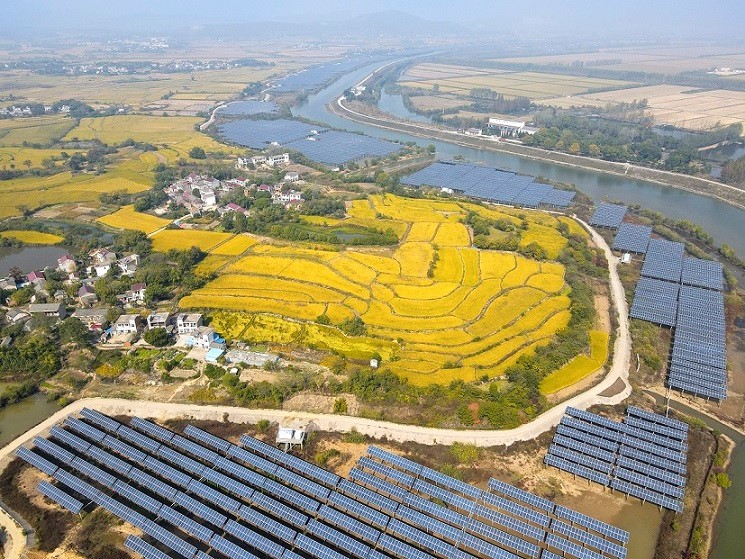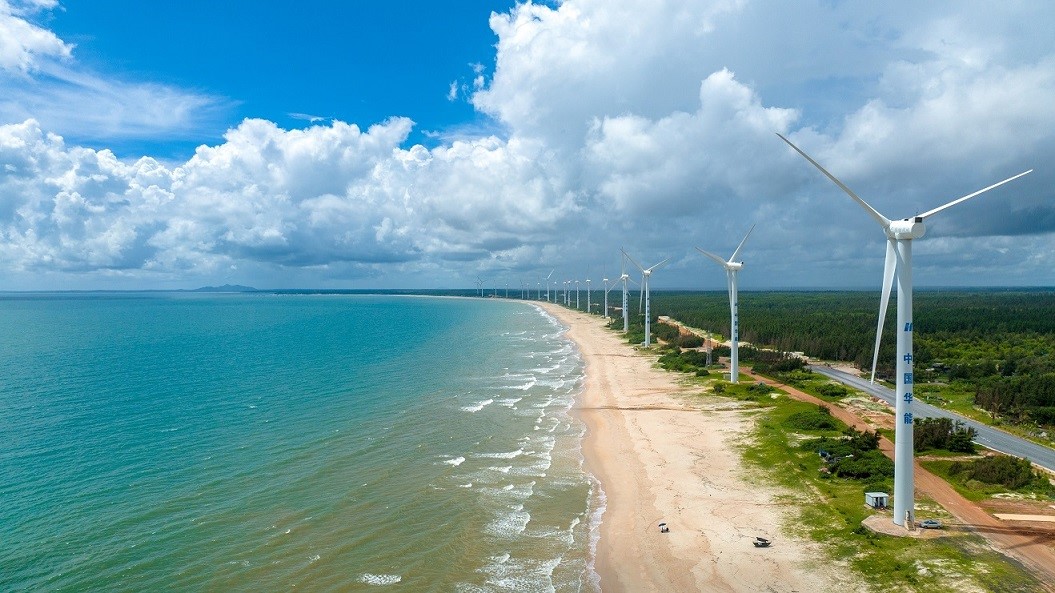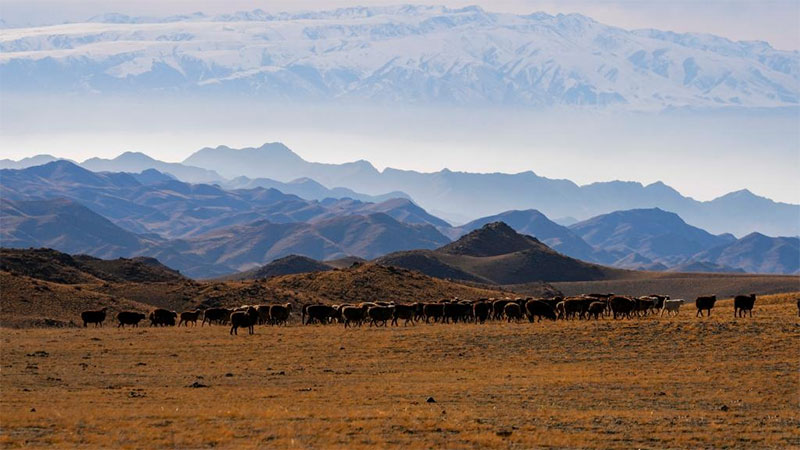China accelerates green, low-carbon development
The Ministry of Ecology and Environment recently issued a report to review China's policies and actions for addressing climate change since 2021.
The report demonstrated the country's new progress in coping with climate change and its contributions to promoting global climate governance.
The report said China firmly implemented a national strategy of actively responding to climate change and put in place a policy framework for carbon peak and carbon neutrality over the recent years. The country has made a series of new arrangements and taken more forceful measures and policies to advance relevant work in an orderly manner, according to the report.

Photo taken in October 2022 shows photovoltaic panels installed in Baihu township, Lujiang county, Hefei, east China's Anhui province. (People's Daily Online/Li Hongbing)
As of 2021, China had fostered 430 specialized and sophisticated enterprises that produce new and unique products in the environmental protection and energy conservation sector. The output value of the sector exceeds 8 trillion yuan ($1.1 trillion), with an annual growth rate of over 10 percent.
Nearly 90 types of products have obtained "green" certificates, including construction materials, express delivery packages and electronic products.
Optimizing its energy structure, China has vigorously developed the non-fossil sector while enhancing the clean utilization of fossil energy.
As of the end of 2021, the country's installed capacity of renewable energy totaled 1.06 billion kilowatts, accounting for 44.8 percent of the total installed power generation capacity. China ranked first in the world in terms of offshore wind power installed capacity.
At the same time, China continuously promotes the clean and efficient utilization of traditional energies. The county upgraded coal-fired power plants with a total capacity of nearly 900 million kilowatts to save energy and reduce carbon emissions.
Besides, it completed ultra-low emission transformation of coal-fired power generation units totaling 1.03 billion kilowatts, or 93 percent of the country's total installed capacity of coal power generation. The world's largest clean coal-fired power system has been built.

Photo taken in July 2022 shows a picturesque view in the Qilianshan National Park in Wuwei, northwest China's Gansu province. (People's Daily Online/Li Zhiqi)
China also enhances the carbon sink capacity of its ecosystem. Last year, China nurtured 34.67 million mu (2.31 million hectares) of forests, restored 14 million mu of degraded forests, planted 54 million mu of trees, and treated 21.6 million mu of land of sandy and rocky desertification.
Besides, it added and restored 1.09 million mu of wetlands. The country has seen continuous improvement in its natural reserve system with national parks as the mainstay.
According to the report, China's CO2 emission per unit of GDP in 2021 decreased by 3.8 percent from that in 2020 and 50.8 percent from 2005. Non-fossil energy accounted for 16.6 percent of primary energy consumption. There was a significant drop in coal consumption per unit of GDP.
The national carbon emissions trading market is a major institutional innovation for China to reach its "dual carbon" goals. The trading market was officially launched in July 2021.
By Oct. 21 this year, it has witnessed a cumulative trading volume of 196 million tons, with a cumulative turnover of 8.58 billion yuan. The market has been operating in an orderly and stable manner, and the trading price is steadily increasing.

Wind turbines are seen in Mulan Bay of Wenchang, south China's Hainan province, striving for China's "dual carbon" goals, July 2022. (People's Daily Online/Yuan Chen)
Wang Zhixuan, a member of China's National Expert Committee on Climate Change noted that enterprises have gained a significantly higher awareness of carbon assets, carbon reduction and achieving low-cost carbon emission through market means.
The carbon trading market has started to show its functions in promoting enterprises' greenhouse gas emission reduction and accelerating low-carbon transition, he added.
China will keep implementing the national strategy of actively responding to climate change, take the synergy between pollution reduction and carbon emissions as leverage for promoting a comprehensive transition to green and low-carbon economic and social development, and enhance its efforts to address issues at the source through systematic and holistic approaches, said Li Gao, an official of the Department of Climate Change at the Ministry of Ecology and Environment.
Besides, the country will actively yet steadily advance its work related to carbon peak and neutrality, accelerate the low-carbon transition of key areas, construct the national carbon emissions trading market in a stable and orderly manner, and continue improving relevant legal and policy systems, Li noted.
He said China should carry out comprehensive and in-depth popularization campaigns on coping with climate change at multiple levels to foster green and low-carbon lifestyles and consumption habits.
The country should also implement the National Strategy for Climate Change Adaptation 2035 to enhance climate change monitoring and risk management, actively join global climate governance and make contributions to building a fair and rational global climate governance system for win-win results.
Photos
Related Stories
- Unity, action urged to tackle global climate crisis as experts warn against COP27 entangled in politics
- COP27 kicks off in Egypt, with rich countries under scrutiny on fulfilling promises
- China to accelerate building carbon emission calculation system
- China urges developed nations to honor climate financing commitments to Africa
- Half of world's coral reefs face climate change threat by 2035: study
Copyright © 2022 People's Daily Online. All Rights Reserved.









